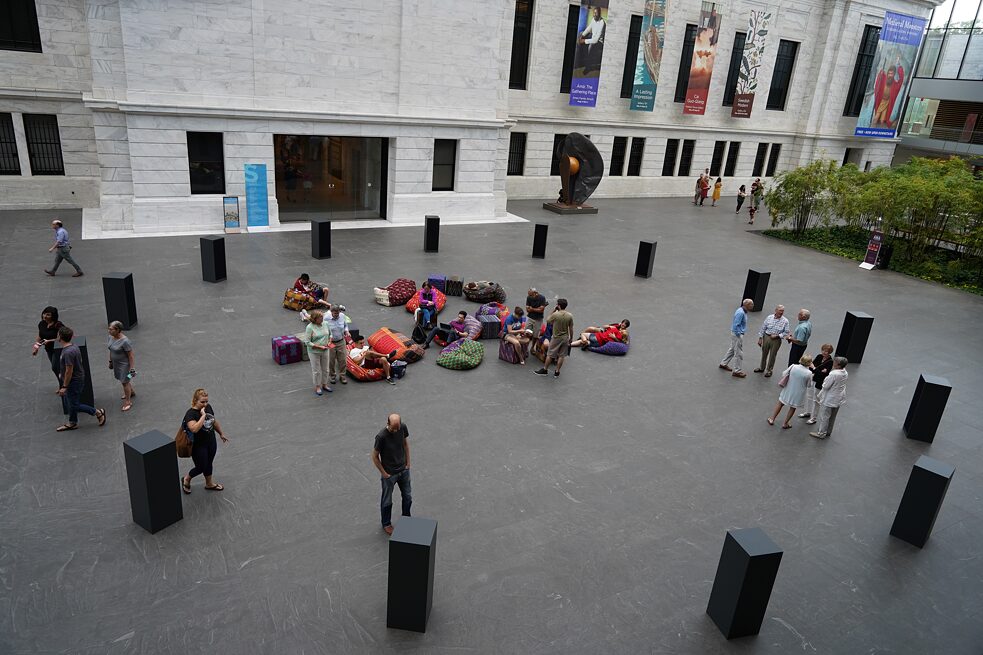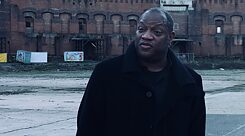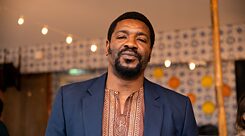A conversation between Louis Chude-Sokei and Emeka Ogboh
Please note, this event takes place at 12:00 PM EDT (18:00 CEST).
How can listening to a space of historical trauma, like the Nazi Party Rally Grounds in Nürnberg, help us find lost or new narratives in history? Can sound help re-tell the story of colonization and histories of Africans in the contemporary world? In this online conversation, scholar and author Louis Chude-Sokei and sound artist Emeka Ogboh consider their sound practices within the context of memorialization and ask if the medium of sound can point to new ways to remember and honour all narratives of the past.
The conversation begins with the following presentations:
History is Listening: Race, Sound and Living Archives
Louis Chude-Sokei, founder of the Echolocution Project discusses the project’s dependence on a history of Black engagements with history and technology via sound and its commitment to archiving spaces of historical trauma ranging from Nuremberg, Germany, to slave sites in the African Diaspora.
More on the
Chude-Sokei is currently working on the related project “
Sometimes you just have to give it your attention” focused on the former Nuremberg Nazi Rally Grounds, which is funded by the German Federal Cultural Foundation.
The Spaces of African Memory
Nigerian Sound Artist
Emeka Ogboh will discuss his evolving methods of creating sound installations rooted in both his culture and his ongoing engagement with the experiences and histories of Africans in the contemporary world.
Below images from Ogboh's sound installation
Ámà: The gathering place (Multichannel sound. Sculpture. Fabrics)
at the Cleveland Museum of Art in 2019.
-
 Image: Emeka Ogboh
Image: Emeka Ogboh
-
 Image: Emeka Ogboh
Image: Emeka Ogboh
 Bild: LCS
Louis Chude-Sokei
Bild: LCS
Louis Chude-Sokei is writer and scholar who teaches at Boston University and directs the African American Studies Program. His work includes the award-winning The Last Darky: Bert Williams, Black on Black Minstrelsy and the African Diaspora (2005) and The Sound of Culture: Diaspora and Black Technopoetics (2015). Forthcoming are Floating in A Most Peculiar Way: A Memoir (Houghton Mifflin Harcourt, 2021) and Dr. Satan’s Echo Chamber and Other Essays (Wesleyan University Press). He is the Editor in Chief of The Black Scholar, one of the oldest and leading journals of Black Studies in America and the founder of the sonic art and archival project, Echolocution.
 Photo: Jean Picon
Emeka Ogboh
Photo: Jean Picon
Emeka Ogboh connects to places with his senses of hearing and taste. Through his audio installations and gastronomic works, Ogboh explores how private, public, collective memories and histories are translated, transformed and encoded into sound and food. These works contemplate how auditory and gustatory experiences capture existential relationships, frame our understanding of the world and provide a context in which to ask critical questions on immigration, globalization, and post-colonialism. Ogboh has participated in numerous international exhibitions including documenta14, (2017), Athens and Kassel, Skulptur Projekte Münster (2017), the 56th edition of La Biennale di Venezia, Italy (2015), and Dakar Biennale (2014).
“Listening to History" is a series of transatlantic conversations between sound artists, historians and musicologists around the relationship between sound and remembrance. With monuments being called into question around the world, many are asking if there are more flexible and effective alternatives to classical marble and bronze statues. What qualities should we be looking for in the monuments of the future – can sound point us in new directions? What advantages does sound as a medium offer for connecting the past with the present?
Shaping the Past is produced in partnership with the Goethe-Institut, Monument Lab, and the Bundeszentrale für politische Bildung (Federal Agency for Civic Education). The project connects to the activist and artistic work of local, national, and transnational movements as a reflection of memory culture and discusses new perspectives on forms of memory.
Back